Fate Of Iran's Hijab Bill Hangs On Government Financing
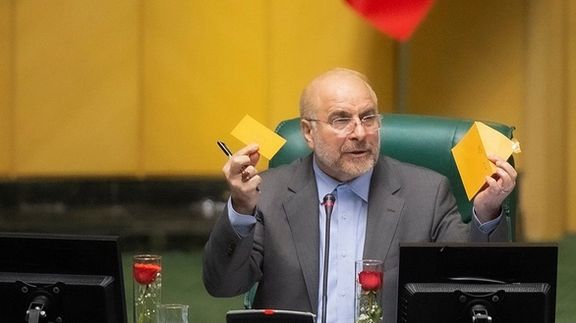
The completion of Iran's controversial Hijab bill depends on its financial endorsement by the government, a step that has yet to materialize, speaker of the Iranian parliament said Sunday.

The completion of Iran's controversial Hijab bill depends on its financial endorsement by the government, a step that has yet to materialize, speaker of the Iranian parliament said Sunday.
Parliament Speaker Mohammad Bagher Ghalibaf announced that the parliament insists on the prompt approval of the bill's financing.
“We have sent a letter to the government regarding Article 75 (acceptance of financial liability) more than 25 days ago, and they have not yet responded,” he added.
In September, the Iranian parliament passed a bill titled "Protection of Family Through Promotion of Hijab and Chastity Culture." The legislation included penalties, notably hefty fines, for violations by women.
But the bill's enforcement needs hijab agents in streets and public venues, as well as other expenses, which might prove a challenge for the cash-strapped government.
The bill faced an unexpected setback when the constitutionally mandated Guardian Council, comprising 12 members with ultimate legislative authority, rejected twice. The Council cited ambiguities within the text, prompting a call for revisions by the parliament.
While some speculate the rejection stems from procedural issues, others suggest that the Guardian Council may be exercising caution amidst concerns of potential public unrest leading up to the parliamentary elections in March.
The enforcement of hijab regulations has intensified following widespread protests in Iran since the death of Iranian-Kurdish Mahsa Amini in 2022. Amini's arrest in Tehran, reportedly for defying the mandatory hijab law, ignited one of the most significant uprisings in recent Iranian history.
Women across the nation have been actively challenging the compulsory hijab, resulting in a heightened presence of hijab enforcement personnel in public areas such as subway stations.
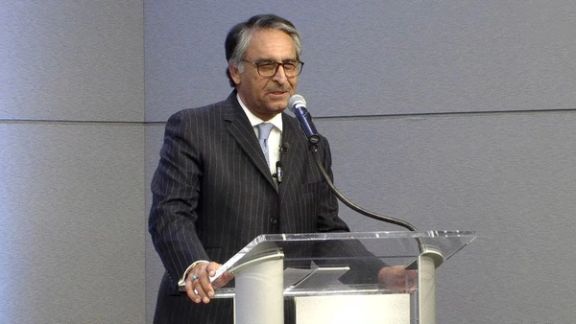
Pakistan's foreign minister has called on the authorities of the Islamic Republic to address the armed attack on Saturday morning in Saravan, Sistan-Baluchestan province.
Nine Pakistani workers were killed by unidentified gunmen in a restive southeastern border region of Iran on Saturday. The incident occurred just over a week after a deadly exchange of cross-border missile fire between the neighboring countries, resulting in the deaths of nearly a dozen individuals, including at least two children.
Jalil Abbas Jilani, urged the authorities of the Islamic Republic to address the issue, saying, " This heinous attack is an attempt to spoil relations between Pakistan and Iran by our common enemies."
So far, no group has claimed responsibility.
The Sistan and Baluchestan deputy governor, Alireza Marhamati, told state news agency IRNA that according to survivors of the incident, "Three-armed people shot at the foreigners (Pakistanis) after entering their residence and fled the scene."
Pakistan's new ambassador to Iran also said he was "deeply shocked by horrifying killing of nine Pakistanis in Saravan” and asked Tehran to extend its cooperation for investigating the armed attack.
Naser Kanaani, the spokesman for Iran’s Ministry of Foreign Affairs, also condemned the attack, saying,“Iran and Pakistan will not allow enemies to damage the brotherly ties between the two countries.”
Sistan-Baluchistan, among the predominantly Sunni Muslim regions in Shiite-majority Iran, is a scene of ongoing turmoil involving drug trafficking networks crossing borders, insurgents from the Baluchi ethnic groups, and armed factions.
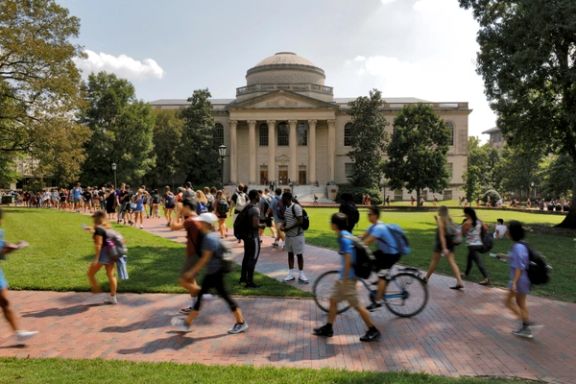
Iranian graduates seeking higher education in the US are facing significant delays in obtaining visas, even with letters of admission from top universities.
Iran International has spoken to some students who have been waiting for much longer than the 6-month limit, after which a prospective student can pursue legal action under current advice of the State Department.
The delays are attributed to increased security scrutiny for visa applications from citizens of nations categorized as supporters of terrorism, including Iran.
Immigration attorney David Gluckman, who is familiar with such cases, says the long delays in student visa decisions almost “exclusively” affects Iranians.
“There are some other nationalities that I deal with in these types of cases. But in terms of student visa cases, it’s almost all Iranians,” Gluckman says, noting how things have gotten worse in recent years, under both Presidents Donald Trump and Joe Biden.
“Agencies are required to pass on or to make decisions on matters that are before them within a reasonable time,” Gluckman explains, “so if… it's taking an unreasonable length of time, you can sue them under the Administrative Procedure Act. In the past, it had been a little bit more manageable… but it’s just gotten worse and worse and I've had to file more and more lawsuits. And just within the last several months... even lawsuits haven't been as effective as they used to be.”

The State Department denies that Iranian students are treated differently because they are from Iran.
“Every Visa Decision is a national security decision, and every prospective traveler to the United States undergoes extensive security screening,” a spokesperson for the State Department wrote to Iran International. “Students from Iran are one of the top 25 places of origin for international students studying in the United States, and we welcome Iranian students.”
Currently, around 11,000 Iranian students study in American universities, according to the Institute of International Education, which tracks international students in the United States.
There’s no data on the success rate of applications for student visas among Iranians, but one Telegram group created by and for students sharing their ‘visa experience’ has almost 700 members, most of whom are still waiting for a decision.
The overarching feeling among prospective students is that an entry clearance (a visa) is the tallest hurdle, much taller than shining grades that would get them admitted to a respectable university in America.
Students affected by the delay speak of a sense of despair, especially since –to them at least– it all looks so random, impossible to plan for, unlike the application, even the admission, for which they plan and endeavor for many years.
“Outside the embassy, everyone was talking about an officer who rejected everyone, but I ended up with another officer who was nice,” says one prospective student, who despite his apparent luck has been waiting for three months for an answer.
Another student says, “I asked the officer how long I’d have to wait for the visa? They told me, don't worry, you will have it, just wait for our email. I never received any emails after that.”
The impact of these delays is felt not only by the students but also by the institutions that seek international talent to advance their research.
“We basically hire students to come and work on our research projects,” says Prof. Amir Aghakouchk from the civil engineering department at UC Irvine. “The Number of PhD applicants has gone down… because there are a lot of job opportunities. That's why bringing talent from outside the US is sometimes absolutely necessary.”
Some institutions and many scholars in the US–especially those of Iranian origin– are voicing their concern about the delays. They maintain that academic environments are best kept free from political tensions.
But not everyone agrees with that statement.
Kaveh Madani, an academic and director of the UN think tank on water, believes universities are “political” across the world. “Every country has the right to ensure that the people they allow in are not a security risk,” he says, “but the existing procedures are not effective. Individuals associated with the regime… go through the filter and innocent people who have nothing to do with politics face such problems.”
This is a sentiment echoed by many of those waiting to be ‘cleared’ to pursue their dream in American universities.
“We are not political, and we are not trying to escape the situation in our country,” says one female student who has had PhD offers from three universities in the US, still waiting for a response from the embassy. “I hope we get the answer and don't get mixed up with everything else.”

The families of four Kurdish political prisoners who face death sentences have been summoned to Evin Prison for a meeting, a sign of imminent execution.
The Hengaw Human Rights Organization reported that Pejman Fatehi, Mohsen Mazloum, Mohammad (Hazhir) Faramarzi, and Vafa Azarbar are scheduled to meet their families at Evin, where they face imminent execution after receiving death sentences from Branch 26 of the Tehran Revolutionary Court.
Amnesty International earlier condemned their arbitrary detention since July 2022. The organization reported that the men were arrested by Iran's Ministry of Intelligence near Urmia, West Azarbaijan province, on July 20, 2022. State media later announced their arrest, accusing them of “espionage for Israel and plotting terrorist activities within the country.”
Footage aired on state television in October and December 2022 purportedly depicted the four men confessing to planning a bomb attack near the central city of Esfahan, allegedly under Israeli intelligence guidance.
The Islamic Republic, which has the highest rate of executions in the world after China, has executed 90 people just from December 22 to January 21.
In a recent revelation, UN experts disclosed that at least 834 people were executed in Iran in 2023, with eight of them linked to nationwide protests. The experts urgently called on the Iranian government to halt the surge of executions and undertake a comprehensive review of the use of the death penalty.
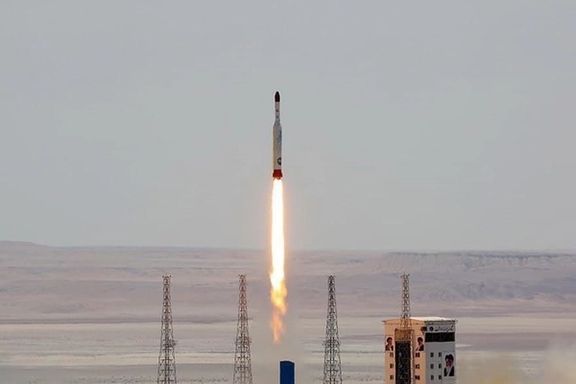
Iran simultaneously launched three satellites for the first time on Sunday using the domestically developed Simorgh (Phoenix) rocket, state media reported.
One satellite weighing 32 kg (70 pounds) and two nano-satellites of less than 10 kg each were sent to a minimum orbit of 450 km (280 miles), with the two smaller devices aimed at testing narrowband communication and geo-positioning technology, the reports said.
Iran’s satellite launches are viewed by the United States and its European allies as a possible cover to develop long-range ballistic missiles capable of carrying nuclear warheads.
A recent US intelligence assessment suggested that launching satellites “shortens the timeline” for Iran to develop an intercontinental ballistic missile. It is all the more worrying, experts say, since Iran is on the verge of nuclear capability, according to most intelligence estimates and recent International Atomic Energy Agency reports.
This was Tehran’s second satellite launch in one week. On January 21, the government announced the launch of the Soraya satellite, which it claimed was put into an orbit 750 kilometers above the earth.
The larger satellite, named "Mahda" and built by Iran's Space Agency, is meant to test the accuracy of the Simorgh rocket in delivering multiple cargoes to space.
European powers raised concerns about the launch of Soraya, saying that the space launch vehicle's technology could be used for the development of long-range ballistic missile systems.
Iran on Saturday dismissed European countries’ condemnation of its launch of the Sorayya satellite, saying peaceful technological advancement in the aerospace field was the country’s legitimate right.
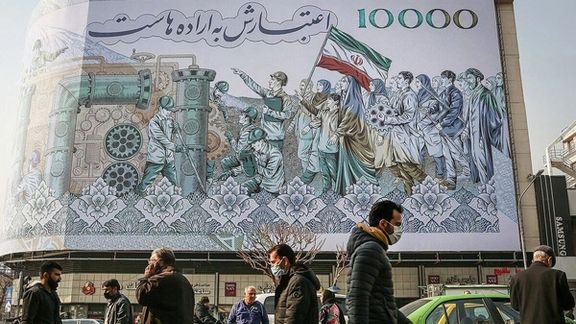
Despite extensive currency injections, Iran’s rial is on a nosedive amid heightened regional tensions and prospects of Donald Trump winning the US presidency.
The rial fell to 562,000 against the US dollar on Saturday, as uncertainty grows about a military escalation in the region and Trump's successes in US Republican primaries.
UPDATE: The expected escalation happened quickly. Following the news on Sunday of an attack on a US base in Jordan where three US serviceman died, and President Joe Biden's threat of retaliation, the weakened rial fell further to 575,000 per dollar.
The Iranian currency has fallen about 13-fold since 2018, when then-president Trump pulled the United States out of the 2015 JCPOA nuclear deal and imposed sanctions on Iran’s oil exports and international banking.
Additionally, the price of the British pound and euro, which soared to record highs in Iran last Tuesday, experienced further escalation on Saturday. Each pound was traded for 714,200 rials, while each euro fetched approximately 610,000 rials in Tehran's free currency market, which despite some official exchange rates, reflects the real value of the rial against foreign currencies.
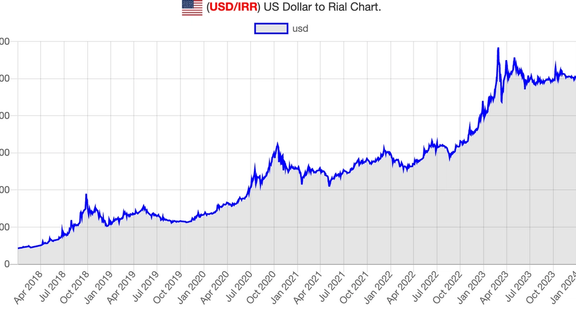
Amid the economic woes, Iran's leading economic newspaper Donya-e-Eqtesad has drawn attention to the potential ramifications of Trump's potential return to the White House, citing it as a factor contributing to the rise of foreign currencies and the price of gold. The paper also highlighted regional instabilities, particularly in the Red Sea, as factors fueling economic insecurity among Iranian investors. Last week, the devaluation of the rial intensified following Iran's ballistic missile strikes on targets in Iraq and Pakistan. Tensions were already heightened due to Iran-backed Houthis' assaults on commercial vessels in the Red Sea.
According to Donya-e-Eqtesad, market analysts attribute the rial’s freefall to various factors, including "increased cost of trade with Iraq," as well as the developments related to the US presidential elections.

However, state-run media in Iran claim that the rise in the foreign currency exchange rates is just a “bubble” created by those who seek to benefit from fluctuations in the market. Iran’s chief banker Mohammad-Reza Farzin claims that the country enjoys a “favorable foreign exchange reserves.” Farzin said last week that fluctuations in the market are transient.
Fars news agency, affiliated with Iran’s Revolutionary Guards, claims that the rial will bounce back in the coming days, speculating that rial’s will settle at about 520,000 per dollar.
Asr-e Iran, a moderate-conservative website, published an article arguing that the impact of the news about Trump’s victory on Iran’s currency market is trumpeted as a manipulation tactic aimed at creating a false psychological and media atmosphere and fostering speculative inflation in Iran.
Rejecting the assumption that Iran’s oil exports increased due to a lax enforcement of US sanctions under the Biden administration, Asr-e Iran said the real reasons behind the rise in oil revenues are the government's efforts to sell oil through unofficial channels and the recovery of the global energy market following the slump caused by the COVID-19 pandemic. It added that geopolitical repercussions of the Russian invasion of Ukraine and the OPEC+ decision, in collaboration between Russia and Saudi Arabia, to curb crude supply have also prevented market saturation and created opportunities for the sale of sanctioned oil, including the Iranian crude. A very significant factor is the willingness of small Chinese refineries, known as "teapots," to buy sanctioned oil at discounted rates, the article highlighted.
All in all, there is a rumor circulating in Iran that the government was trying its best – mainly through injecting foreign currency into the market -- to keep the wobbly rial stable until the re-election of Joe Biden, who is believed to have overlooked Iran's sanction-busting. However, the growing chance of Trump landing at the White House has dashed Tehran’s hopes for the steady flow of its oil exports.
Sajjad Bourbour, a senior economic pundit, told Centrist Aftab News that the Iranian currency market heavily depends on the prospects of Tehran mending relations with the West. He mentioned that despite the Central Bank’s injection of approximately 2 quadrillion rials (about $4 billion) into the market to prevent rial's fall, the currency is at its all-time low.
With an annual inflation rate of at least 50 percent, the diminishing value of the rial signals further inflationary pressures in the months ahead. Monthly wages for workers, averaging less than $200, exacerbate the challenges within an economy where inflation outpaces salary adjustments. Such economic strains have led to strikes and protests across various sectors, including oil and gas production platforms and refineries.